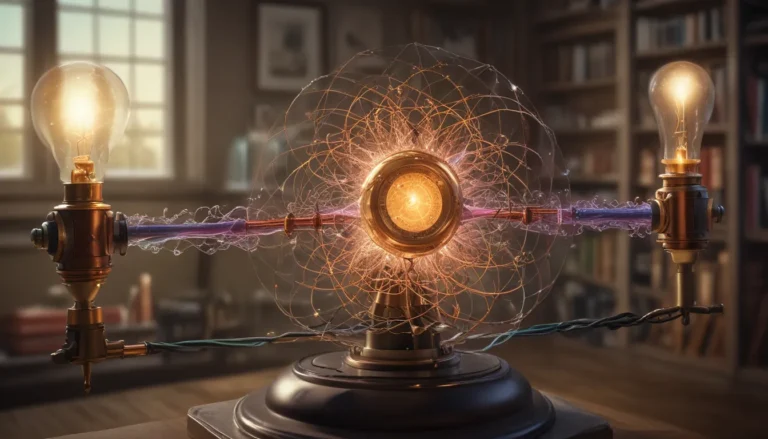A Note About Images: The images used in our articles are for illustration purposes only and may not exactly match the content. They are meant to engage readers, but the text should be relied upon for accurate information.
Electric current is a fundamental concept in physics that plays a crucial role in our understanding of the natural world. It is the flow of electric charge through a conductor, such as a wire, and is an essential aspect of everyday life. From powering our homes and devices to driving technological advancements, current is ubiquitous in our modern society. In this article, we will explore the fascinating world of electric current by uncovering 17 intriguing facts that shed light on its properties, applications, and impact on various aspects of our lives. Whether you are a physics enthusiast or simply curious about the wonders of electricity, these facts will not only broaden your knowledge but also provide a deeper appreciation for the role of current in shaping our world.
The Basics of Electric Current
Electric current is the measurement of the rate at which electric charge flows through a conductor, typically measured in units called Amperes (A). André-Marie Ampère, a French physicist, made significant contributions to the field of electromagnetism, leading to the naming of the unit of electric current after him. An ammeter is used to measure the flow of electric current in a circuit, helping us understand the amount of charge passing through a point over time.
The Two Faces of Electric Current: Direct Current (DC) and Alternating Current (AC)
Electric current can flow in two directions: direct current (DC), which flows in a single direction, and alternating current (AC), which changes direction periodically. While most household electrical devices run on AC, batteries provide DC power. Understanding the differences between these two types of current is crucial in the world of electronics and power transmission.
The Intricacies of Current Flow
In an electrical circuit, current flows from a region of high electric potential (voltage) to a region of lower potential, facilitated by conductive materials. It is essential to note that the direction of electric current is opposite to the flow of electrons, following a convention established before the discovery of electrons.
The Impacts of Resistance on Electric Current
Resistance, measured in Ohms (?), is a property of materials that opposes the flow of electric current. Factors such as temperature and material composition can influence resistance. Additionally, the flow of current can produce a magnetic field and generate heat, leading to the utilization of this principle in various heating devices and electrical appliances.
The Safety Concerns Surrounding Electric Current
While current is vital for powering our devices and enabling the transmission of information, it can also be dangerous if not properly controlled. High levels of current can pose safety hazards such as electric shock, burns, and electrical fires. It is crucial to implement proper insulation, grounding, and circuit protection mechanisms to ensure safety in electrical systems.
Applications of Electric Current in Our Lives
Electric current plays a crucial role in various aspects of our lives, from powering electronic devices such as computers and smartphones to facilitating long-distance power transmission through the electrical grid. Additionally, the functioning of the human body relies on electric current for transmitting signals in the nervous system, highlighting the interconnectedness of electricity and biology.
Superconductors: Unlocking the Potential of Electric Current
Superconductors are materials that, when cooled to very low temperatures, can conduct electric current without any resistance. This property has the potential to revolutionize various technological applications, paving the way for advancements in areas such as energy storage and power transmission.
Ohm’s Law: Understanding the Relationship Between Voltage, Current, and Resistance
Ohm’s Law states that the current flowing through a conductor is directly proportional to the voltage across it and inversely proportional to the resistance. This fundamental law helps in understanding and calculating the behavior of electric circuits, providing insights into the interplay between voltage, current, and resistance.
In conclusion, the world of electric current is vast and full of wonders, offering insights into the intricate workings of our modern society. By delving into the fascinating facts about current, we gain a deeper appreciation for its role in shaping our technological advancements and understanding of the physical world. So, the next time you switch on a light or charge your phone, take a moment to reflect on the marvels of current and its profound impact on our lives.






